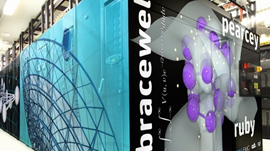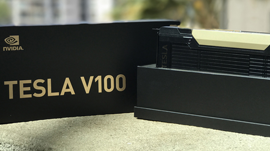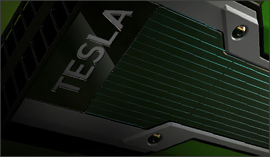The Commonwealth Scientific and Industrial Research Organisation (CSIRO) in Australia welcomed a new large scale scientific computing system to expand their capability in deep learning, a key approach to furthering progress towards artificial intelligence.
“This is a critical enabler for CSIRO science, engineering and innovation. As a leading global research organization, it’s important to sustain our global competitiveness by maintaining the currency and performance of our computing and data infrastructures,” said Angus Macoustra, CSIRO’s Deputy Chief Information Officer, and Head of Scientific Computing.
The new system built by Dell EMC features 114 PowerEdge C4130 servers with Tesla P100 GPUs interconnected with NVlink, boasts over 1.6 million CUDA Compute Cores.
“The power of this new system is that it allows our researchers to tackle challenging workloads and ultimately enable CSIRO research to solve real-world issues. The system will nearly double the aggregate computational power available to CSIRO researchers, and will help transform the way we do scientific research and development.”
One of the first research teams to benefit from the ‘Bracewell’ system will be Data61’s Computer Vision group who is developing software for a bionic vision solution to tackle new and more advanced challenges, and deliver a richer and more robust visual experience for the profoundly vision impaired.
“To make this a reality, we need to build vision processing systems that show accurate visualizations of the world in a broad variety of scenarios. These will enable people to visualize the world through their bionic vision in a way that enables them to safely and effectively interact in challenging visual environments,” said Associate Professor Nick Barnes.
In addition to artificial intelligence, the system provides capability for research in areas as diverse as virtual screening for therapeutic treatments, traffic and logistics optimization, modelling of new material structures and compositions, machine learning for image recognition and pattern analysis.
Read more >
CSIRO Powers Bionic Vision Research with New GPU-Accelerated Supercomputer
Jul 19, 2017
Discuss (0)

Related resources
- DLI course: Speed Up DataFrame Operations With RAPIDS cuDF
- GTC session: Poster Reception (Sponsored by Cadence)
- GTC session: The Vision-AI Revolution powered by DeepStream
- GTC session: Warp: Advancing Simulation AI with Differentiable GPU Computing in Python
- NGC Containers: CUDA
- SDK: CV-CUDA









